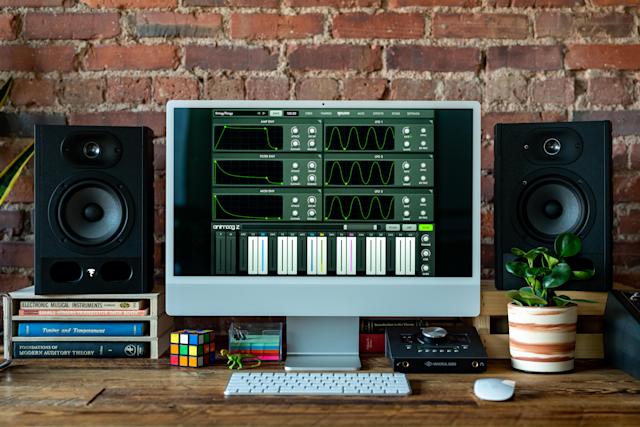Animoog Z ushers the landmark iOS synth into the modern age
2 min read
Animoog Z ushers the landmark iOS synth into the modern age
Ten years ago Moog released Animoog – strange departure for a well-known company because of analog synth old school. The company has tried in the world of previous applications with Filtatron, which is an emulation of the classic moog stair filter. But the Animoog is a completely different beast. It is a full software instrument using wavetable synthesis, often associated with cold and complex digital sound which in many ways of antithesis of what is worn by the moog. But, the application turned out to be a big success. And for the tenth birthday finally got the right sequel in Animoog Z.
The core, called the Anisotropic Synth Moog Engine, is mostly the same. From dozens of waveforms you choose up to eight at one time. Starting from a sample of analog saw waves to more digital sound. What makes it relatively unique is the ‘orbit’ module and ‘path’ that forms timbre. The way they work hard to be described, but basically noted you play on the road drawn in space, and orbiting around the road. You control the speed and intensity of the distance of the orbit, as well as the speed where it moves along the way and determines how the sound of each record develops, in a relatively blurry.
The big change here from the original application is that Animeog Z adds the third dimension to the lane. So instead of just traveling along the X and Y axis, the note can also move along the Z axis. This gives a new application just a more deep touch and records a little more space to evolve. The difference can be smooth sometimes, but certain presets in Animeog Z utilize additional modulation paths to create truly wild and complex sounds. (Just check the spiral and lightning ball down.)
There are also new parts of the effect with a looper, delay, filter, arpeggiator, and “thick” section. Thick is also in the original application and it only offers a variety of ways to add your voice, from adding detune, drives and bit destructive effects. While some of them are the heritage from the original, the way they grouped together here makes the sound design a little more fluid and linear.
The entire application has received a large lift face that not only makes it feel more modern, but also makes it easier to navigate. While UI can feel a little narrow on the iPhone, it’s still years outside the original. Unfortunately I can’t test it on iPad or Mac, so I can’t talk to how well the interface scales when having a room to breathe. But, general, logical and consistent general layout.








